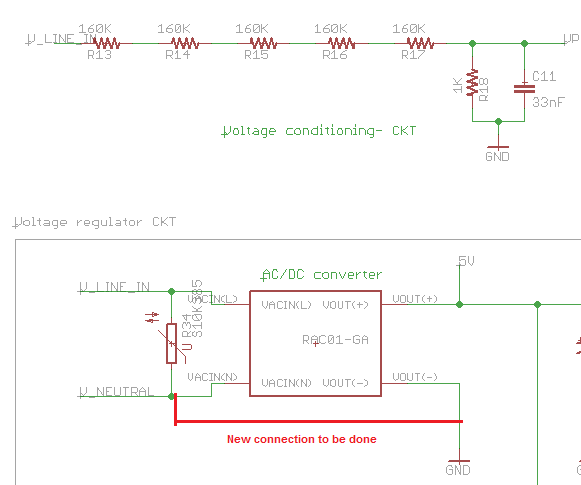Other Parts Discussed in Thread: MSP430AFE253, MSP430I2041, EVM430-I2040S
Hello,
I was reviewing the TI design of the single phase energy meter using built in AC/DC converter, and as per the schematic the following is noticed:
1- AC neutral point is connected to AGND
2- AGND is connected to DGND using the net Tie (NT2) as shown in the schematic.
3- 0V of the AC/DC Converter is connected to DGND using jumper J5 as shown in the schematic.
4- The above means that AC neutral point is also connected to the 0V of the AC/DC converter & to DGND.
The question is if i connect the neutral directly to the 0V of AC/DC converter is it going to have damage on the PCB? Please explain how this work?
I attached the schematic for easy reference.
Thanks,
Hishamtidr445.pdf


